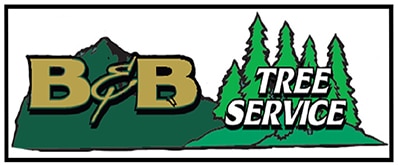If you’ve ever seen trees that have been damaged by a powerful storm, you’ve probably thought they would all die within a short period of time. While that may have been the case for some trees which were completely uprooted, many trees are actually able to survive the kind of damage done by strong winds and pelting rains.
The real question is – whether the tree survives or not, is it safe to allow the tree to remain in place in the neighborhood? The best way to be sure about this question is to consult your local arborist or tree expert because you won’t want to risk the safety of children or adults who happen to live nearby, or who walk through the area where the damaged tree is. If you decide on your own, some guidelines below will help your decision.
How to evaluate the safety of a damaged tree
The first thing to assess in the aftermath of storm damage, is whether or not the tree has suffered structural damage, i.e. has the damage been done to its foundation or any structural support limbs? If there are damaged branches, these can be removed so as to eliminate any safety hazard, but if there is a danger that the tree could topple over at some future time, it should definitely be removed. The unpredictability of a future fall makes it dangerous to leave the tree in place, where it could topple at any given moment.
If any of the major limbs have been damaged, or if most of the major limbs have been blown away or damaged, then it’s unlikely that the tree can survive, and it should be removed. Many species of trees have a ‘leader’ branch, one which is the main upward-growing limb, and this limb is largely responsible for continued growth and a desirable appearance. If this leader limb has been severely damaged, the tree might survive the loss, but it will probably be deformed and lose much of its potential appeal. While this is a judgment call, it’s probably best to cut the entire tree down, since normal growth will probably not be possible in the future.
Another useful guideline in trying to determine the survivability a tree has is to evaluate how much of its crown has been lost. In cases where more than 50% of a tree’s crown has been lost, the tree will likely not survive, since it will be able to provide the foliage necessary to nourish the tree and help it to thrive. For branches that are obviously damaged, you may need to inspect visually how bad the wounds are on those branches. For instance, a branch that is about 12 inches in diameter and which has as much as four inches damaged, will probably not be able to survive another season. Smaller wounds can be overcome, but huge wounds will generally be enough to kill the branch, and many such wounds will be sufficient to kill the tree itself.
The importance of safety
In situations where so much damage has occurred to a tree that survival could go either way, you’re best off to err on the side of caution and have the tree removed. There is no justification for leaving a tree in place when there’s a chance it could harm individuals walking anywhere in its proximity. Just imagine how bad you’d feel if you left the tree in place, and it actually harmed one of your neighbors.
Keep in mind that you can always replace a tree at your local garden shop, and you’ll be able to enjoy watching it grow to maturity all over again. If need be, you can even purchase one which is more mature, so the development period won’t be quite so long. And in the meantime, you can have peace of mind, knowing that no one will be hurt by the damaged tree because you made the right decision.

